Cells of the brain can be divided into two main types; these are neurons and glial cells. The adult human brain is thought to consist of around 86 billion neurons and around the same number of glial cells. Neurons are the fundamental units of the brain and are responsible for receiving sensory information from the external environment and relaying motor commands from the brain to the muscles. Glial cells have a variety of roles in supporting and protecting the functions of the neurons.
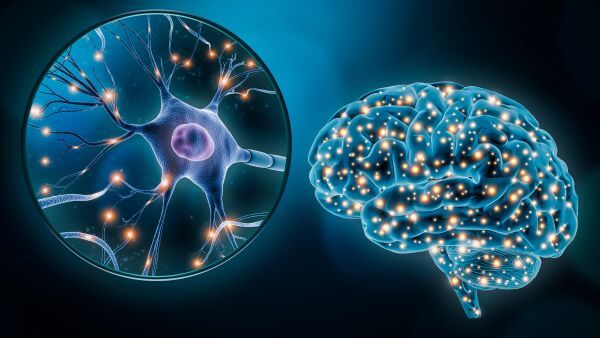
Types of Brain Cells
There are two main types of cells found in the human brain; neurons and glial cells.
What Are Neurons?
Neurons (AKA nerve cells) are the information-carrying cells of the central nervous system (CNS). They use electrical impulses and chemical signals to transmit messages between different parts of the brain, and between the brain and the rest of the nervous system. Neurons are what allow us to perceive and interact with the world around us, and are responsible for all of our thoughts, movements, emotions, and desires.
Structure of Neurons
The anatomy of a neuron can be divided up into three basic parts. These are the cell body (or soma), the dendrites, and the axon.
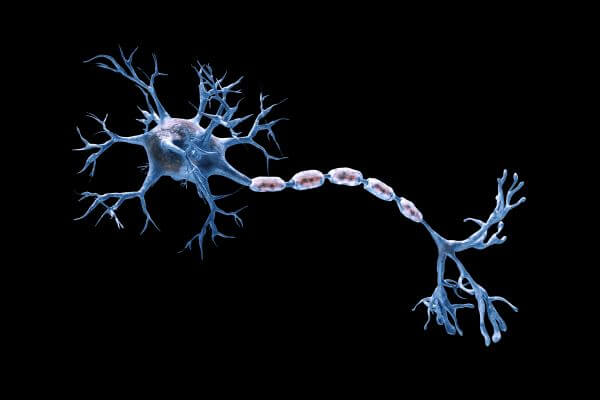
Cell body
The cell body (AKA the soma) of the neuron contains the nucleus, which houses all of the cell’s DNA and regulates cellular activities. The nerve cell body also contains essential organelles including ribosomes, mitochondria, endoplasmic reticulum, and Golgi apparatus.
Dendrites
Dendrites are projections that branch off of the cell body of neurons. Their function is to receive messages in the form of chemical signals from other nerve cells. They then convert these signals into electrical impulses and transmit them to the cell body.
Axon
The axon is a long extension that carries electrical impulses away from the nerve cell body. The axon is usually surrounded by a myelin sheath, an insulating layer that allows for the rapid conduction of impulses along the length of the axon. At the end of the axon are the axon terminals, which is where information exits the cell and is passed on to target cells.
Types of Neurons
There are three main types of neurons in the nervous system. These are sensory neurons, motor neurons, and interneurons.
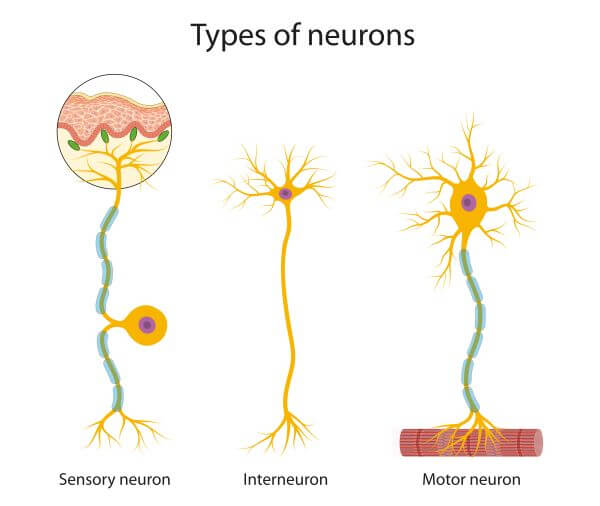
Sensory Neurons
Sensory neurons detect stimuli in the external environment. They are activated by sensory input such as light, sound, heat, or pressure, and carry information from the sense organs (like the eyes and ears) to the brain. For example, if a bee stings you, a pain signal will be sent to the brain.
Motor Neurons
Motor neurons carry impulses from the brain to the muscles and control all of our voluntary movements. This allows us to react to stimuli in our environment. For example, if a bee stings you, the motor neurons will transmit messages from the brain to the muscles of your arm and cause you to swat at the insect.
Interneurons
Interneurons connect other nerve cells and help to relay messages between the brain and the rest of the body. They allow impulses to pass from the sensory neurons to the brain, and from the brain to the motor neurons.
What are Glial Cells?
For a long time, scientists thought that the key function of glial cells was to hold neurons together – in fact, ‘glia’ is Greek for ‘glue.’ Today, we know that glia have far more complex functions than this, and actually play an active role in brain signaling. Unlike neurons, they cannot produce electrical impulses but can communicate with neurons and other glial cells via chemical signals.
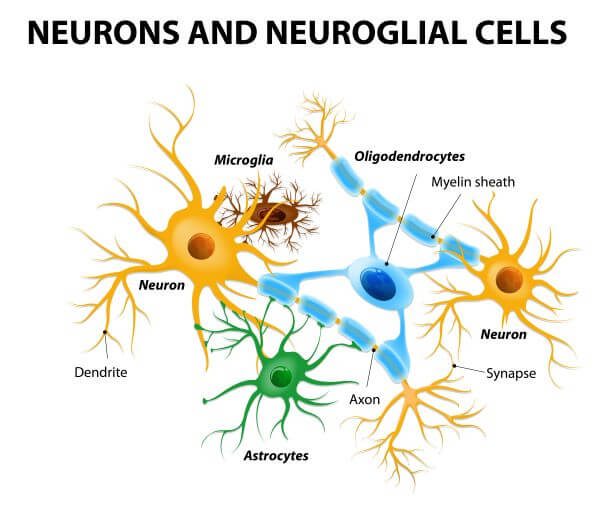
Types of Glial Cells
There are several different types of glial cells in the human brain with various roles in supporting the function of the neurons and the transmission of electrical impulses. The four types of glia in the CNS are the oligodendrocytes, the astrocytes, and the ependymal cells (collectively known as the macroglia), and the microglia.
Oligodendrocytes
Oligodendrocytes produce myelin, a fatty substance that forms the myelin sheath. This is an insulating layer that wraps around the axons of nerve cells and allows for the rapid conduction of nerve impulses. Therefore, oligodendrocytes play a key role in supporting the transmission of messages along the length of the axon.
Astrocytes
Astrocytes, which get their name from their star-shaped appearance, are the most abundant type of glial cell in the brain. They support the neurons in a variety of ways. They maintain the chemical environment around neurons, regulate blood flow in the brain, and provide nutrients to nerve tissue.
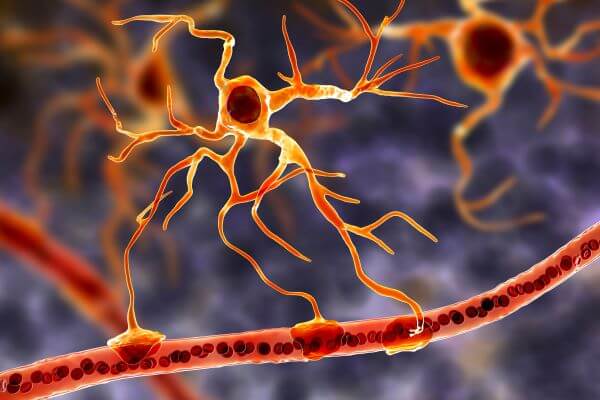
Ependymal Cells
Ependymal cells line the spinal cord and central cavities of the brain and are involved in the production of cerebral spinal fluid.
Microglia
Microglia are the immune cells of the CNS and protect the brain from damage and disease by identifying and removing infectious agents and dead or damaged brain cells.
Losing Brain Cells
Neurons in the brain can die as a result of a traumatic head injury, or as a result of damaged caused by a stroke. Certain diseases, such as Alzheimer’s, Parkinson’s, and Huntington’s disease, also kill neurons. Loss of brain cells (whether as a result of illness or injury) can lead to a variety of other medical complications, including:
- Difficulty initiating movement
- Sporadic, uncontrollable muscle movements
- Difficulties with memory
- Difficulties completing daily tasks
- Paralysis

What is Neurogenesis?
For a long time, scientists believed that adult brains could not generate new brain cells and that we were born with all the neurons we needed. This has since been disproved, however, and we now know that the brain continues producing new neurons well into old age.
The process of growing new neurons in the brain is known as neurogenesis. New neurons are generated most quickly in childhood, and, though neurogenesis continues throughout our adult lives, its rate drops sharply as the brain ages.
Increasing your rates of neurogenesis may help to maintain cognitive function as you get older. Fortunately, there are several things you can do to encourage the generation of new neurons in your brain, including:
- Regular aerobic exercise
- Stress-relieving activities
- Neurobics (AKA ‘brain training’ exercises)
